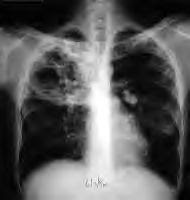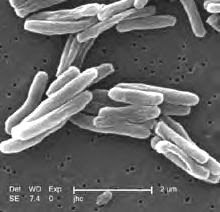The call to action in Prevention of Mother to Child Transmission (PMTCT) aims to reduce the risk of mother to child transmission of HIV through integrated HIV/Aids education, routine counselling and testing as well as administration of a prophylaxis single dose Nevirapine therapy to mother and infant.
It goes without saying then, that the need to protect infants or the unborn from the possibility of contracting Tuberculosis, including the Multi-Drug Resistant (MDR) and Extremely Drug Resistant (XDR) TB, which is closely linked to the HIV epidemic, becomes of paramount importance.
During the last decade, there has been an increase of TB infections as an opportunistic infection in people with HIV because of their weakened immune systems. This is causing concern in the light of MDR and XDR-TB surfacing because interventions such as the prevention of mother to child transmission of HIV may be challenged where the mother is living with HIV and found with Tuberculosis.
Communications Officer of National TB Control Programme, Henry Chimbali, told Health Check that most healthy people do not get TB unless they are in very close contact with people infected with Tuberculosis as it is spread through droplets in the air.
"The infection of XDR-TB is transmitted the same as the standard TB and could be prevented the same way ordinary Tuberculosis is prevented," Chimbali said.
The international medical humanitarian organisation, Medicines Sans Frontieres (MSF) is quoted by Health Check calling for approaches and new tools to treat multi-drug resistant (MDR) Tuberculosis in Southern Africa.
"MDR, and now XDR-TB, are the tip of an iceberg of failing strategies to control TB," said Dr.. Eric Goemaere of MSF "We desperately need new tools and new approaches and we need them now - we cannot just sit and wait. Despite all the international fanfare created by XDR, efforts to treat drug resistant TB in high HIV prevalence settings are moving at a snail's pace and investments to develop new drugs and diagnostics to improve management of all forms of TB are terribly inadequate. This situation is unacceptable."
Chimbali told Health Check, however, that any development of TB could be averted if regular TB is treated effectively and if Malawi succeeded in controlling the XDR-TB transmission, then the risk of infection would not be there.
Country Director for UNC Project at Kamuzu Central Hospital, Dr.. Francis Martinson, says there is need for a prophylaxis regimen to protect mother/infant pairs from tuberculosis just as there is a Nevirapine dose to facilitate the prevention of mother to child transmission of HIV.
In this regard, University of Northern Carolina (UNC) Project has embarked on a randomized, placebo-controlled trial to determine the efficacy of Isoniazid (INH), a component drug in the combination of TB treatment in preventing Tuberculosis disease and latent TB infection among South African infants with peri-natal exposure to HIV.
Dr. Martinson told Health Check that the trial would have an initial sample size of 1,300 study participants consisting of 500 infected and 800 uninfected exposed study participants.
"The objective of the trial aims to determine whether INH prophylaxis increases TB disease survival for HIV infected participants; to determine whether INH prophylaxis increases TB infection-free survival for peri-natal-exposed HIV uninfected study participants," said Dr.. Martinson.
"Among both peri-natal-exposed HIV infected and HIV uninfected study participants we are also trying to assess the toxicity and safety of INH prophylaxis."
The fact that once one is HIV positive and having Tuberculosis, one is automatically placed on antiretroviral therapy, puts the mother/infant pair at risk of not accessing medical care if they infect one another and do not get diagnosed in time.
http://allafrica.com/stories/200709040470.html
WHAT'S NEW IN TUBERCULOSIS




